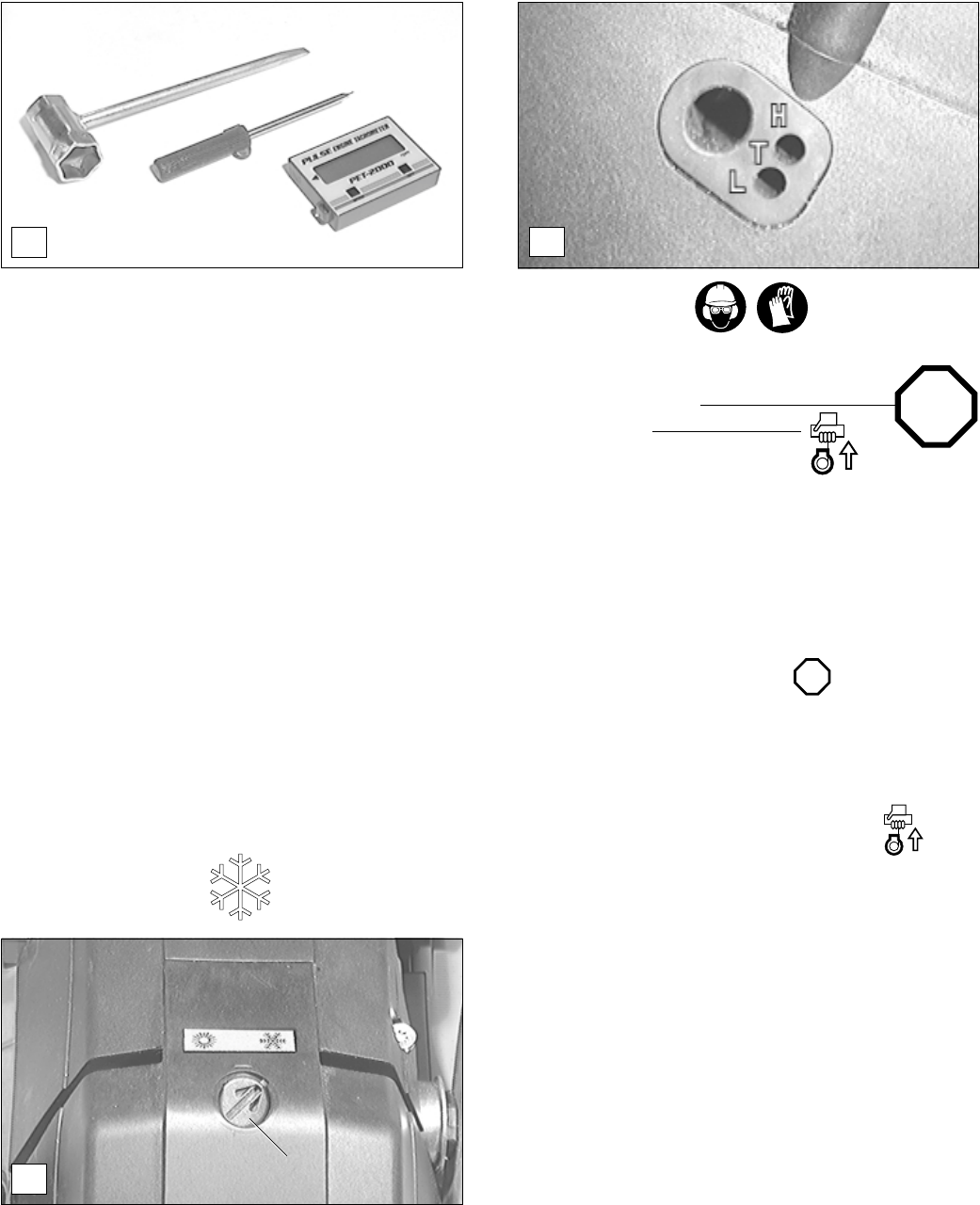
23
Working in winter
In order to prevent carburetor icing in winter, warm air can be
led from the cylinder to the carburetor.
- Use the universal wrench to turn the button (G/1) comple-
tely to the right.
- Now the carburetor heating is actuated.
If the temperature is above 0
o
C, the carburetor heating must
be switched off.
Not following this instruction may result in damage at the
cylinder and piston.
E
F
1
Important information:
The carburetor of this tool is fitted with limiter caps which restrict
the range of adjustment and prevents over-rich mixture
settings. This ensures providing good engine power and
efficient fuel consumption.
Before installing the limiter caps, the manufacturer performs
the „Basic Adjustment” procedure.
Caution:
An optimum output can only be achieved if the carburetor
is adjusted correctly. For this work, which should be
carried out by an expert, the engine must be warmed up
and the air filter clean.
The carburetor has been adjusted by MAKITA on the basis of
atmosheric pressure conditions at sea level. Other atmosphe-
ric pressure conditions or the running-in process of a new
engine may require to readjust the carburetor.
It is urgently recommended to use a revolution indicator (order
number 950 233 210) in order to achieve a correct adjustment
of the carburetor. Use the carburetor srew driver and the
universal wrench delivered with the chain saw.
Before adjusting the carburetor the engine must be warmed up
for a period of 3-5 min.
G
For adjusting the carburetor correctly the following steps
must be carried out:
1. Check adjustment
2. Start engine
3. Set idle speed
4. Adjust speed
5. Check idling speed
6. Check acceleration
7. Check max. speed or output
8. Repeat adjustment procedure starting with step 3, until
idling speed, max. speed and acceleration are reached
with the adjustment made.
Adjustment instructions (step 1)
- Before initial operation make sure that the adjusting screws
(H and L) have not been set in all the way. Limiter caps do
not protect the engine from leaning.
- Turn the two adjusting screws (H and L) counter-clock-
wise as far as they will go.
- Start the engine and let it warm up (step 2).
Set idle speed (step 3)
- If the chain turns when the engine is idling, unscrew the
throttle-valve stop screw (T) until the chain stops. If the
engine runs unevenly, screw the screw (T) back in.
- Idling speed should be 2,200 rpm.
Adjust speed (output) (step 4)
- Adjust the speed by adjusting the main jet screw (H) to
13,500 rpm.
Caution:
The DCS 9010 is equipped with a speed limiting electro-
nic ignition system. Speeds of more than 13,500 1/min
cannot be achieved, not even by reducing the amount
of fuel in the mixture.
Check idle speed (step 5)
- After having adjusted the max. speed ensure the idle speed
is set to 2,200 rpm. (the chain must not turn). Use the idle
jet screw (L) to regulate it. Turn in the screw (L) to speed
up, and turn out the screw (L) to speed down the engine.
Check acceleration (step 6)
- Now check the acceleration, i. e. the time necessary for
speeding up from idle speed to max. speed. To do this,
press the throttle lever hard.
- If the acceleration is too low, turn out the idle jet screw (L)
approx. 1/8 rotation.
Adjusting the carburetor
STOP
STOP


















